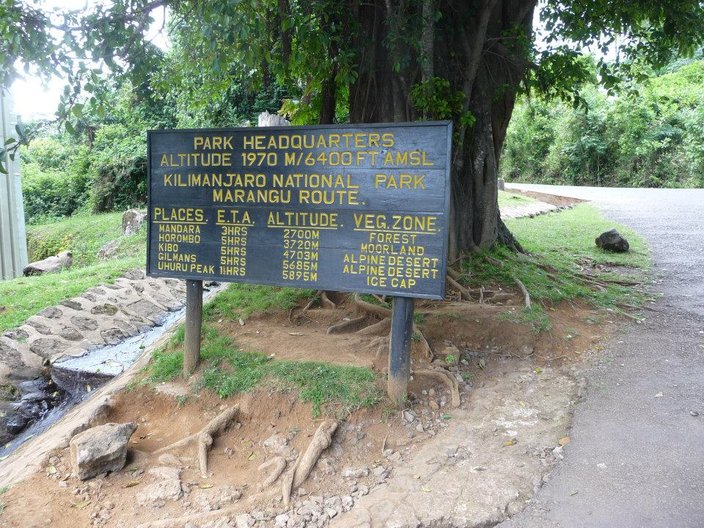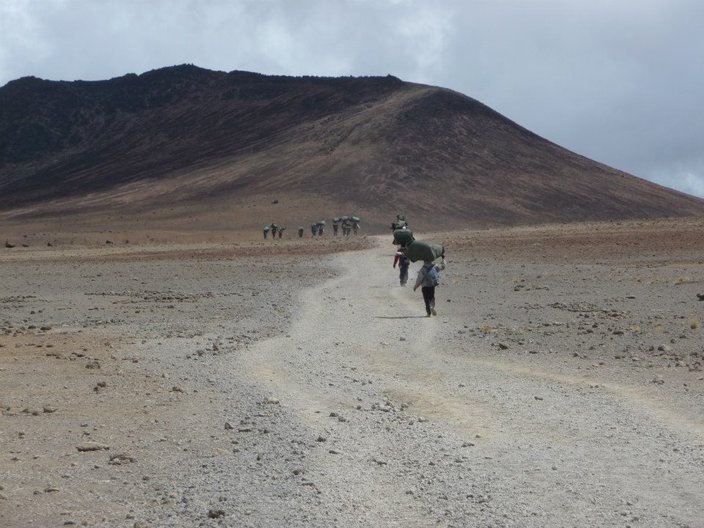
March 17, 2015
 Christina LoBrutto/for PhillyVoice
Christina LoBrutto/for PhillyVoice
Mt. Kilimanjaro is the highest mountain in Africa and the highest free-standing mountain in the world at 5,895 meters above sea level.
Yes, you might call it an adventure to climb up that hill to work, or to trek the four flights of stairs to your apartment.
Maybe you make the occasional trip to the Pocono Mountains for some light hiking and fresh air.
But what about thinking a little bigger? OK, maybe a lot bigger.
If you want real adventure, why not attempt to summit the world's tallest freestanding mountain -- Mt. Kilimanjaro? At 19,341 feet, Kili is Africa's tallest peak.
You might be surprised to know that even though it is located just 200 miles from the equator, Kilimanjaro is ice-capped. In fact, it features five different climate and vegetation zones from bottom to top: farmland, rainforest, heather/moorland, alpine desert and ice cap (also known as summit zone).
Trekkers can select from seven routes on the mountain, ranging in cost and number of days to climb. Each route has something different to offer.
The routes have different starting points located on multiple sides of the mountain and vary in distance. Some routes are considered easier than others and are more favorable for altitude acclimatization.
Depending on the route, you may be sleeping in tents or mountain huts at each camp along the way. The Marangu route is the only one to offer hut accommodation.
Hikers are accompanied by guides, as well as porters who carry the bulk of trekkers' belongings. Most guides and porters climb Kilimanjaro multiple times a year -- while carrying everyone else's stuff. Impressive.
Just as choosing the right route for you is essential, so is deciding on the best tour group. Be sure to research all of the companies that offer Kilimanjaro services to find the one that best suits your needs.
Now, you might be thinking, "I'm not a mountain climber!" Rest assured, Mt. Kilimanjaro is not a technical climb. You don't need any special equipment or certifications. That's not to say, however, that the challenge should be taken lightly.
An adventure of this magnitude requires preparation, a positive attitude and lots of water.
It's important to practice hiking in elevated areas, as the change in altitude is often the hardest part to acclimate to. And, as all of the guides say, "Pole Pole (Slowly, Slowly)." This is the key mantra for all climbers. The slower you go, the more time your body has to adjust to the change in height.
Invest in comfortable and durable hiking boots. You'll be walking for a long time.
Most importantly, keep calm and trek on. A positive attitude can be the difference between having to turn back and reaching the summit.
If you're lucky, you will get there just as the sun is coming up. And there's no other view like it.
Finally, "hakuna matata" isn't just a phrase from "The Lion King." This phrase, which translates to "no worries," is one that natives live by. And you will hear it on the mountain. After all, it's in the official Kilimanjaro song.






